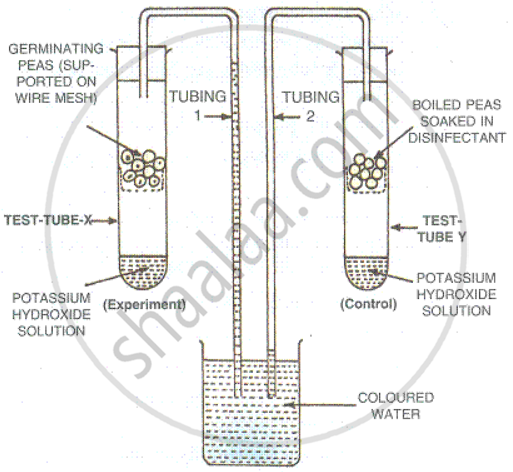Advertisements
Advertisements
प्रश्न
When a substrate is being metabolized, why does not all the energy that released in one step. It is released in multiple steps.What is the advantage of step-wise release?
उत्तर
The complete combustion of glucose, which produces CO2 and H2O as end products, yields energy most of which is given out as heat.
C6H12O6 + 6O2 → 6CO2 + 6H2O + Energy
If this energy is to be useful to the cell, it should be able to utilise it to synthesise other molecules that the cell requires. The strategy that the plant cell uses is to catabolise the glucose molecule in such a way that not all the liberated energy goes out as heat. The key is to oxidise glucose not in one step but. in several small steps enabling some steps to be just large enough such that the energy released can be coupled to ATP synthesis.
APPEARS IN
संबंधित प्रश्न
Name the most common respiratory substrate.
What happens to the energy liberated during respiration?
One same common function is performed by?
Do the plants respire all day and all night or only at night?
Name the following:
Aerobic respiration requires_________ .
Why is it usually difficult to demonstrate respiration in green plants?
Fill in the blank :
_________ are the openings found on older stems.
Fill in the blank:
_____________ is a respiratory substrate
Fill in the blank:
_____________ is a chemical which absorbs oxygen of the air.
The following two chemical reactions are supposed to indicate a certain process occurring in the green plants under two different conditions:
(a) C6H12O6 + 6O2 → 6CO2 + _______ + 38 ATP
(b) C6H12O6 → ________ + 2 CO2 + 2 ATP
(i) Fill in the blank in each reaction.
(ii) Name the process represented by the two reactions.
(iii) What are the conditions under which the two reactions (a) and (b) are occurring respectively?
The following diagram refers to an apparatus which is used to demonstrate a physiological process:

What is the purpose of keeping boiled peas soaked in a disinfectant in test tube Y?
Which gas present in the air is essential for aerobic respiration? What is the role of oxygen during respiration?
A food stall owner was preparing dough for making bhaturas. He added a pinch of yeast and sugar to the dough and left it in a warm place. After a few hours, the dough had risen. There was a sour smell too.
Why did the dough rise?
A food stall owner was preparing dough for making bhaturas. He added a pinch of yeast and sugar to the dough and left it in a warm place. After a few hours, the dough had risen. There was a sour smell too.
Why did the dough smell sour?
If a person is feeling dizzy, glucose or fruit juice is given immediately but not a cheese sandwich Explain.
It is known that red muscle fibres in animals can work for longer periods of time continuously. How is this possible?
RuBP carboxylase, PEP carboxylase, Pyruvate dehydrogenase, ATPase, cytochrome oxidase, Hexokinase, Lactate dehydrogenase.
Select/choose enzymes from the list above which are involved in
- Photosynthesis
- Respiration
- Both in photosynthesis and respiration
